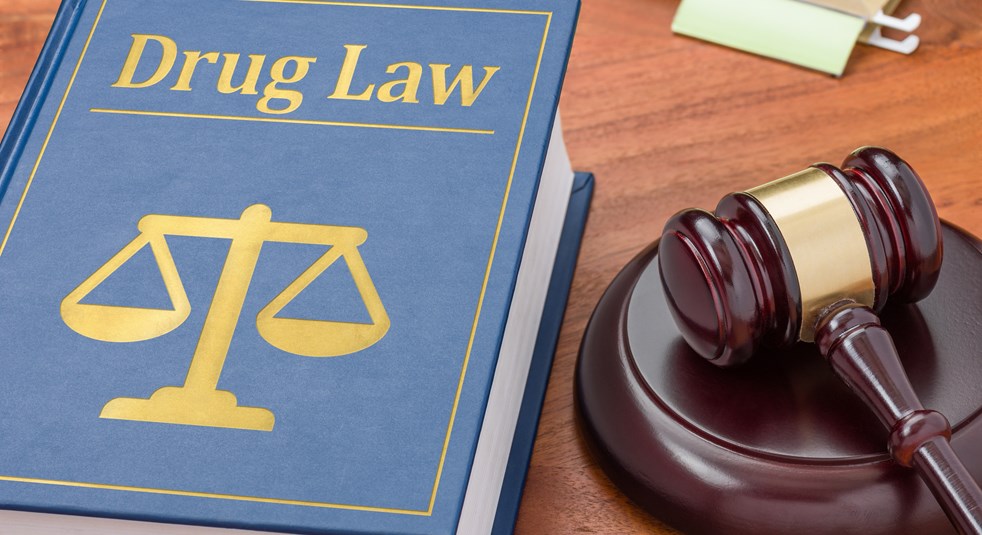Standing in the courtroom as I awaited sentencing, the light tapping of the stenographer gave me déjà vu. The watchful bailiff; the cold steel of handcuffs on my wrists. The row of other men on the bench, mostly Black and Brown. I’d seen all this before.
When the judge slammed down his gavel down, I hung my head low and resolved not to cry. I was going back to prison for the third time.
In Florida, dealing in stolen property is a second-degree felony that carries a maximum sentence of 15 years. I first entered the prison system in 2006, serving a three-year sentence, and then in 2011 went back for another year. In 2014, for selling stolen goods at a pawn shop, I would be sentenced to eight years.
More than 350,000 people are currently incarcerated in the United States on drug charges, with more than 100,000 of them in pretrial confinement at local jails. But many more, like myself, enter the revolving door of the criminal-legal system entirely because of drug use but without ever incurring any drug-related charges. That means we’re not eligible for drug court.
Each time, I was told I’d be rehabilitated while incarcerated, and then waited for something that never came.
In the stifling heat of the windowless Blue Bird bus, shackled, I rode to Florida Department of Corrections (FDC) intake. I thought about what might have been different if I’d had the option of being diverted from prosecution into drug treatment. Though only drug-related charges can get you into drug court, once you have three non-drug felony convictions, the courts consider you permanently ineligible.
Florida has 51 adult drug courts, and while they haven’t been meaningfully evaluated in a decade they have been shown to lower odds of recividism for people diverted to them. Over the course of a year or more, participants pay thousands of dollars for their frequent court appearances and urinalysis testing. But it’s often preferable to prison.
What I cared about most was getting treatment. Florida drug courts can consider medications for opioid use disorder (MOUD), but abstinence-based treatment is much more likely. I would have been fine with that—it was what I wanted, especially by 2014. Drug court would have meant, at minimum, case management and individual and group counseling, along with programs like Narcotics Anonymous. While mandated treatment is harmful on top of being ineffective, in my case these were resources I desperately wanted.
The entirety of my criminal-legal system involvement was for property crimes I engaged in to fund my addiction to cocaine and morphine. Each time, I’d apologized to the people I’d stolen from and asked the judge for access to drug treatment. Each time, I was told I’d be rehabilitated while incarcerated, and then waited for something that never came.
I wanted abstinence the way the criminal-legal systems so often defines it.
I did meet at least one requirement for drug court: a diagnosis of substance use disorder. I‘d been on Suboxone several times over the years when I was on the streets, but it had been a struggle to access. Hospitals would check me in for mental health examinations under the Baker Act, but deny medication and referrals. Of course, Suboxone is available in prison, just not via prescription. Contraband drugs are always readily available if you can pay for them.
I believe everyone should have access to the harm reduction resources that meet their needs, including MOUD, but that wasn’t what I wanted for myself. I wanted abstinence the way the criminal-legal systems so often defines it.
I worked so hard at my sobriety, especially after the first two times I was released from prison. But re-entry is an extremely stressful, high-stakes process to navigate. Not only was I not given Narcan on my way out, but I’d spent my incarceration cut off from any anything even close to support for the behaviors I was trying to change, even though the court system and FDC was telling me I should change them, too. Like so many others, I numbed the pain the only way I knew how. And so the cycle continued.
FDC is the third-largest state prison system. It spends about $65 per day to house each person in its adult male prison facilities, which would mean around $285,000 to incarcerate me by the time I finished my third sentence.
That sentence was when I began my recovery, and I maintained it after release—but I did this in spite of the criminal-legal system, not because of it. Incarceration only prolonged my addiction and took me away from my family. Imagine if, instead of forcing treatment on people who don’t want it, we made it available to those who do.
In memory of Keeley Schenwar, Shawn McKenna, and all of our friends and family.
Image via Arizona Superior Court in Pima County





Show Comments